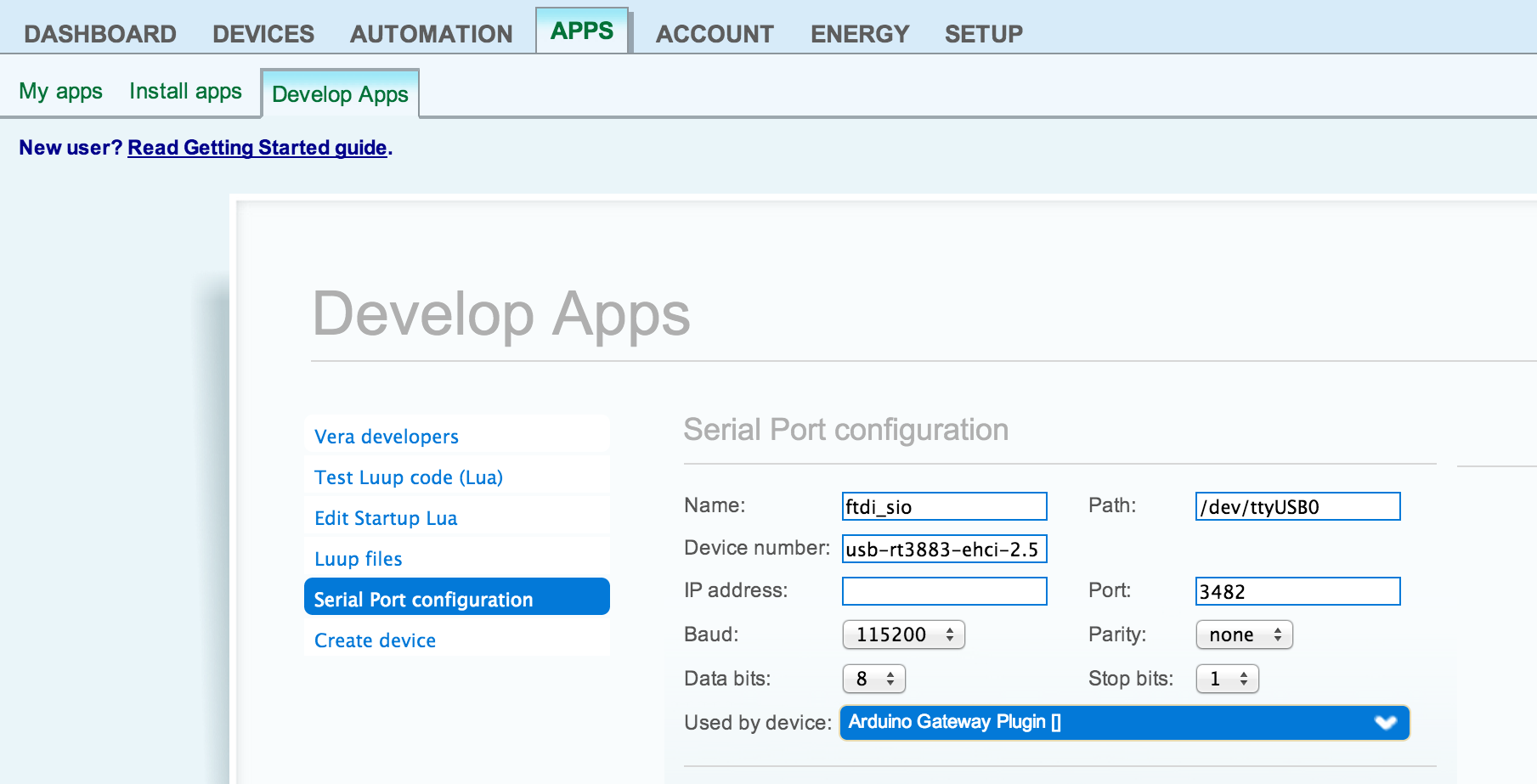Vera Plus and ESP8266
-
Hello djzang
I just built the serial gw using esp-8266 but can not find how to physically hook it to Vera Plus or Vera 3 , do you have step by step instruction as how to do that maybe with pictures and what setup you entered in to the serial port configuration?
Thanks@mntlvr I'm not sure what kind of serial chip is on the ESP8266 but Vera can not detect all types of serial chips because there are no drivers installed. FTDI chips should be detected by Vera automatically and then you just need to set the correct serial port settings:

-
So do you have a working serial general on your Vera now and does it use an ESP 8266 or a Arduino Nano
-
@mntlvr The Vera controllers have a list of supported serial devices. If you look at this page under USB Serial Devices, looking at the chipset column you will see that the FTDI and PL2303 chipsets are the only ones that Vera natively supports. For the 2303 chipsets, some say that they don't work, and others say that manual configuration is needed. Mine luckily just worked with no extra configuration. That list was last modified in 2013 though, so what is supported/works and what doesn't most likely has changed since then.
-
Okay thanks
Well I built a Ethernet board using 1.4.1 library and a W5100 Ethernet board and it worked right off so now I am as curious as heck to make the ESP 8266 work but I still think it has something to do with the newest library. I think I will start out with the Arduino IDE 1.6.4 or something like that and see if that makes a difference. Not very many on this site can help with the issue because they do not have Vera Controllers, so I have to figure this out and just keep trying
